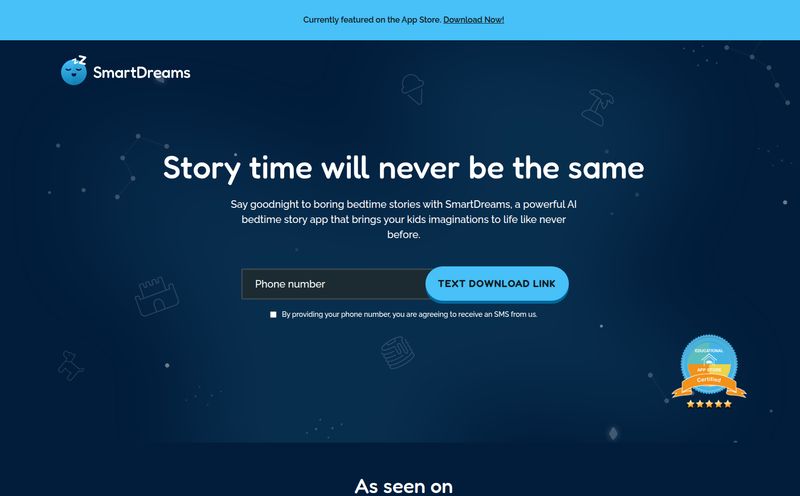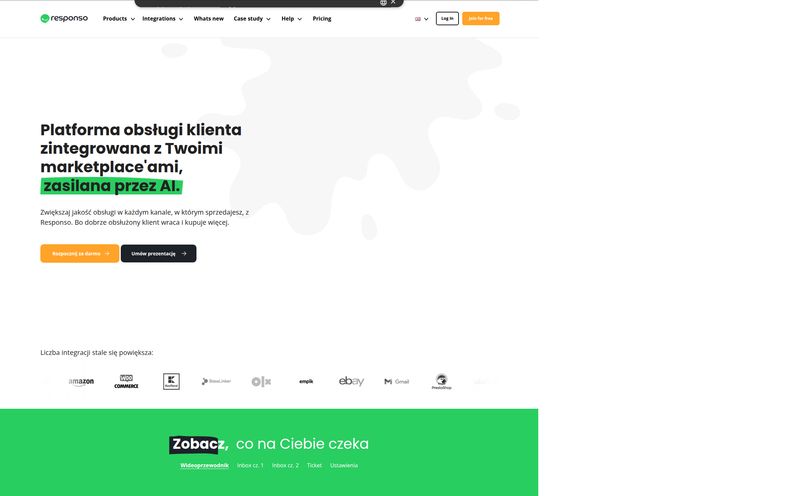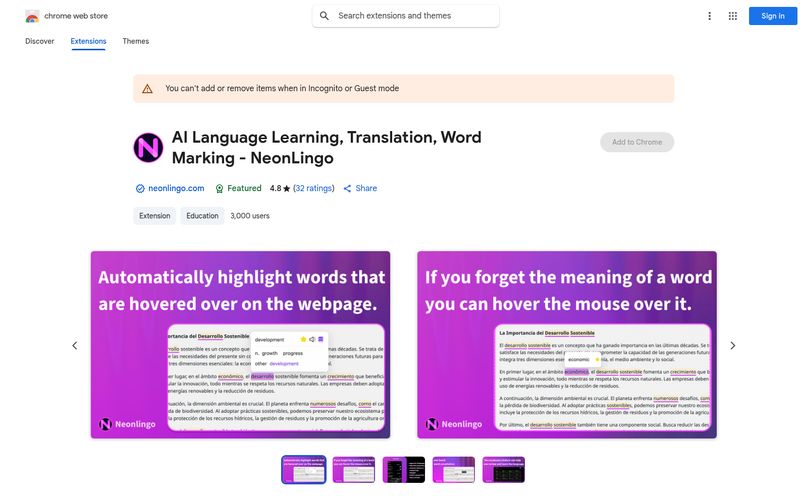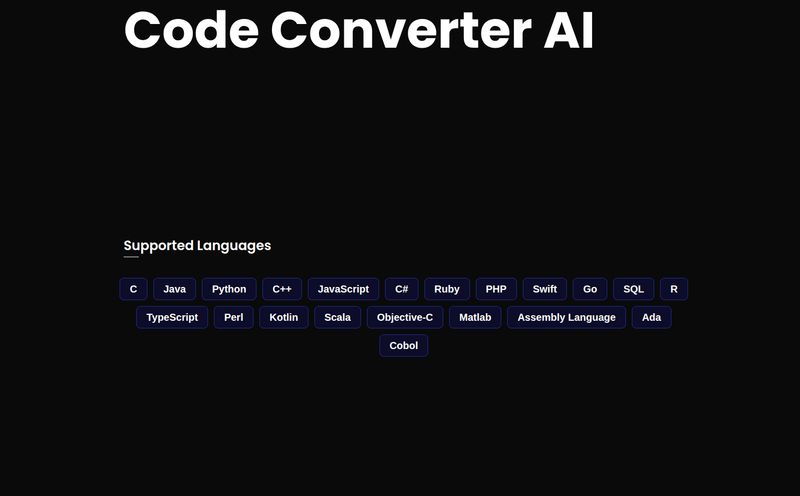In the world of AI, it feels like we're living in a one-company town sometimes, doesn't it? Every conversation, every new app integration, every headline seems to revolve around OpenAI and ChatGPT. And for good reason! It’s powerful, it’s slick, and it has fundamentally changed how we approach content, code, and, well, everything.
But as an SEO and a tech nerd, I get this little itch. I start to wonder what’s happening outside the walled garden. What are the rebels, the tinkerers, and the open-source idealists building? That curiosity led me down a rabbit hole, and I came out the other side with a new favorite toy: HuggingChat.
If you haven't heard of it, you're not alone. It doesn't have the same marketing muscle as the big guys. But what it lacks in Super Bowl commercials, it makes up for in heart, flexibility, and a philosophy that I think a lot of us in the tech space can really get behind.
So, What on Earth is HuggingChat?
In the simplest terms, HuggingChat is the conversational AI assistant from the team at Hugging Face. Think of it as a direct, open-source alternative to ChatGPT. You go to a webpage, you type in a prompt, and a surprisingly intelligent AI model types back. Simple.

Visit HuggingChat
But that's where the similarities kind of end. While ChatGPT is a polished product built on proprietary models (like GPT-4), HuggingChat is more of a community project. It's a frontend that lets you interact with some of the best open-source AI chat models the community has to offer. It’s less like a pristine, curated museum and more like a bustling, vibrant workshop where new things are being built and tested in the open. I've always had a soft spot for the underdog, the Linux to their Windows, and HuggingChat scratches that itch perfectly.
The Hugging Face Ecosystem Is Bigger Than You Think
Before we go any further, you have to understand that HuggingChat isn't just a standalone tool. It’s the friendly, public-facing front door to the massive universe that is Hugging Face. If you're a developer or work in machine learning, you're probably already nodding along. For everyone else: Hugging Face is essentially the GitHub for the AI world. It's a hub where researchers and developers share models, datasets, and collaborate on building AI applications.
This context is everything. HuggingChat isn't just a product; it's a demonstration of what their community and platform can do. It's built on their 'Spaces' and 'Inference Endpoints' infrastructure, which is a fancy way of saying they provide the tools for anyone to build and host their own AI apps.
A Quick Look at the Pricing Structure
This is probably the most common question I get: “So, is it free or not?” The answer is a delightful “yes, but…”
Using the basic HuggingChat interface is completely free. You can go there right now and start a conversation. But if you’re a developer, a startup, or a business that wants to build on their platform, that’s where the paid tiers come in. Here's a quick rundown based on their current offerings:
- Hugging Face Hub (Free): This is for individuals. You get public repositories and can collaborate on projects. It's the perfect starting point.
- PRO Account ($9/month): Aimed at individual power users. You get private repositories, no storage limits on those repos, and higher priority when you're training models. For $9, that's a pretty sweet deal if you're serious about your projects.
- Team ($20/user/month): This is for growing teams, obviously. It adds team management features, role-based access, and better invoicing—all the stuff a business needs.
- Enterprise (starts at $50/user/month): For the big players. This tier offers advanced security features like SSO, dedicated support, and all the enterprise-grade bells and whistles you'd expect.
They also have separate pricing for the raw computing power—the 'Spaces Hardware' and 'Inference Endpoints'—which lets you rent CPU and GPU time. For most of us just looking for a solid AI chat tool, you'll live happily in the free zone. But for the builders out there, the platform is ready to scale with you.
What I Actually Love About HuggingChat
Alright, enough with the specs. What’s it like to actually use the thing? After spending a few weeks with it, a few things really stand out.
It's Powered by the People
The open-source nature isn't just a philosophical win; it's a practical one. There’s a transparency here that you just dont get with closed-source models. The community is constantly pushing new models to the Hub, and you can often see exactly how they were trained. In an industry that's becoming increasingly concerned with AI bias and mysterious 'black box' algorithms, this is a breath of fresh air.
You Can Go Model Hopping
This is my absolute favorite feature. With most other chat tools, you're stuck with whatever model the company decides to give you. With HuggingChat, you can often switch between several different leading open-source models right from a dropdown menu. Why is this cool? Because different models have different strengths! One might be amazing at creative writing, another might be a coding whiz, and a third might be better at factual recall.
It’s like having a whole team of specialist assistants instead of just one generalist. If you're an SEO, this is huge. You can test the same prompt across different models to see which one gives you the best keyword clusters, meta descriptions, or article outlines. It's a level of control I didn't know I was missing.
Web Search Keeps It Fresh
Like some of its competitors, HuggingChat has an option to activate web search. This allows the AI to pull in current information from the internet to answer your questions, which is critical for anyone in a fast-moving field like SEO or marketing. It helps reduce the chance of getting an answer based on outdated 2021 data, a problem that plagued early AI models. It’s not perfect, but it's a must-have feature that they've wisely included.
The Not-So-Perfect Parts (Because Nothing Is)
I wouldn't be giving you the full picture if I didn't mention the rough edges. It's not all sunshine and open-source rainbows.
Yes, It Still Hallucinates
This isn't unique to HuggingChat, but it's important to state clearly: AI models make stuff up. They can generate inaccurate information, cite non-existent sources, and state falsehoods with incredible confidence. The other day, I asked it for some details on a specific Google algorithm update and it confidently invented a name for the update and quoted a fake Matt Cutts blog post from 2018. You always have to fact-check the output, regardless of which AI you're using. Treat it as a brilliant but sometimes unreliable intern.
It's a Work in Progress
Sometimes, the platform can feel a little... raw. The interface is clean but basic. You might run into bugs or slower response times compared to the hyper-optimized commercial platforms. I even saw a message recently that said, "We are cooking something new, please stay tuned..." which is exciting but also a reminder that this is an actively evolving space. This isn't a flaw, necessarily, but a trade-off. You're trading a bit of polish for a front-row seat to the cutting edge of open-source AI development.
HuggingChat vs. ChatGPT: A Quick Showdown
So, who wins in a head-to-head? Honestly, it's the wrong question. It’s like asking whether a Swiss Army knife is better than a professional chef's knife. They're for different people and different tasks.
| Feature | HuggingChat | ChatGPT |
|---|---|---|
| Core Philosophy | Open-source, community-driven | Proprietary, product-focused |
| Model Access | Access to multiple, swappable open-source models | Access to OpenAI's proprietary models (e.g., GPT-3.5, GPT-4) |
| Transparency | High. Models and datasets are often public. | Low. The models are a 'black box'. |
| Polish & Speed | Generally good, but can be less polished/slower | Highly polished, optimized for speed and user experience |
| Best For... | Developers, tinkerers, AI enthusiasts, those who value control and transparency | General users, businesses needing a reliable, easy-to-use 'it just works' solution |
Conclusion: Should HuggingChat Be Your Next AI Sidekick?
After all this, here's my take. If you're a casual user who just wants a quick and easy answer, ChatGPT's polished experience is hard to beat. It’s the iPhone of AI assistants—simple, powerful, and controlled.
But if you're like me—if you're a builder, a creator, an SEO who likes to get their hands dirty, or someone who believes in the power of community and open platforms—then you owe it to yourself to spend some serious time with HuggingChat. It represents a different, more open future for artificial intelligence. It’s the Android of the AI world: a little wilder, infinitely more customizable, and in many ways, more exciting.
It's not about replacing one with the other. It's about adding a powerful, flexible, and fascinating new tool to your arsenal. Give it a try. You might be surprised at what the community is cooking up.
Frequently Asked Questions
Is HuggingChat completely free to use?
Yes, for general conversational use, HuggingChat is free. The costs come in if you are a developer or business wanting to use the underlying Hugging Face platform to host private models, build applications, or require enterprise-level support and security.
Can I use HuggingChat for commercial or business purposes?
You can use the output for your business, but always remember to fact-check it! The license of the specific open-source model you are using might also have its own terms, so it's good practice to check that if you're building a commercial product around it.
How is HuggingChat different from the main Hugging Face platform?
Think of Hugging Face as a massive workshop and library for AI (models, datasets, tools). HuggingChat is a specific application—a chatbot—that is built using the tools from that workshop. It's a demonstration of the platform's power.
Is the content generated by HuggingChat safe and accurate?
Not always. Like all current-generation AI models, HuggingChat can produce biased, inaccurate, or completely false information (a phenomenon known as 'hallucination'). It's crucial to verify any important facts or data it provides.
What does 'open-source' mean in this context?
It means the underlying AI models HuggingChat uses are often publicly available. Researchers and developers can inspect the code, understand how they were built, and even use them to create their own applications. This is in contrast to proprietary models like GPT-4, where the inner workings are kept secret by the company that created it.



